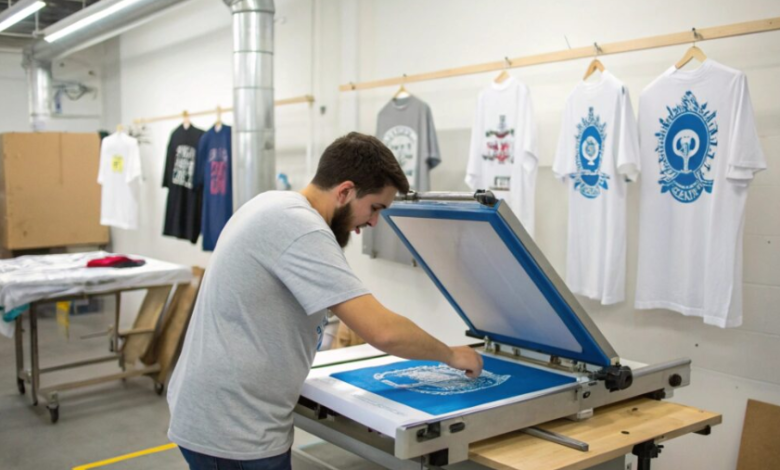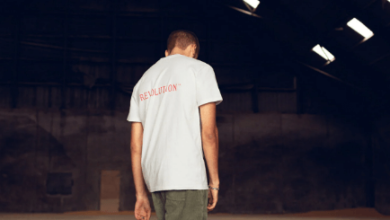How to Spot Truly High Quality Custom Screen Printing Services

In the fast-growing world of branded apparel, event merchandise, and personalized clothing, custom screen printing remains one of the most trusted and visually impactful methods. However, not all screen printing services deliver the same level of quality. Some prints look sharp on day one but start fading, cracking, or peeling after a few washes. Others may suffer from poor color matching, misaligned designs, or cheap materials that diminish your brand’s image.
If you’re investing in custom apparel, it’s crucial to partner with a screen printing provider that values craftsmanship, precision, and durability. But how do you tell the difference between an average service and a truly high-quality one?
This in-depth guide will walk you through everything you need to know to spot high-quality custom screen printing services — from evaluating materials and techniques to identifying the hallmarks of professional expertise.
See also; Choosing the Perfect Footwear for Style and Comfort
Understanding What High-Quality Screen Printing Really Means
Before you can identify a top-tier printing service, it helps to understand what “high-quality” actually looks like in the world of screen printing.
A high-quality screen print should have:
- Crisp, clean edges with no blurring or bleeding.
- Vibrant, opaque colors that match your brand tones accurately.
- Even ink coverage that doesn’t feel thick or rubbery.
- Durability — the design should withstand frequent washing without cracking or fading.
- Proper alignment — all design elements are centered and consistent across the entire order.
These visual and tactile qualities stem from expertise, equipment precision, and attention to detail at every stage of the printing process.
1. Examine the Printer’s Portfolio
A professional screen printing company should proudly showcase its previous work. Reviewing their portfolio gives you insight into their range, quality, and style consistency.
Look for:
- Variety of designs: Can they handle both simple logos and detailed artwork?
- Print clarity: Are lines and edges sharp?
- Color vibrancy: Do the colors pop or appear dull?
- Placement precision: Are prints well-aligned and proportional to the garment?
If possible, request physical samples. Photos are helpful, but the true quality of a screen print is best judged by touch and wear. The print should feel smooth, integrated with the fabric, and not overly thick or sticky.
2. Ask About Ink Types and Curing Methods
The type of ink used greatly influences both the look and longevity of a print. High-quality screen printers typically use one or more of the following:
Plastisol Ink
This is the industry standard for durability. It sits on top of the fabric, creating vivid, opaque colors that last for years. When properly cured, plastisol prints remain flexible and resistant to cracking.
Water-Based Ink
These inks soak into the fibers, resulting in a softer, lighter feel and a more natural finish. They’re ideal for vintage or breathable prints and are also eco-friendly when formulated correctly.
Discharge Ink
Used mainly on dark fabrics, discharge inks remove the shirt’s dye and replace it with a new pigment. This technique produces soft, bright prints with excellent color accuracy.
Regardless of the ink type, the curing process — the heat treatment that sets the ink — must be done precisely. If curing temperatures or times are off, prints may peel, wash out, or crack prematurely.
A quality printer can clearly explain their curing process and provide assurance that their equipment maintains consistent heat and timing for every job.
3. Evaluate Design Preparation and Artwork Handling
Professional screen printing starts with expert artwork preparation. This involves color separation, resolution adjustments, and screen setup to ensure that your design translates perfectly from digital to fabric.
Signs of quality include:
- The printer requests vector artwork (AI, EPS, or SVG files) to maintain clarity.
- They communicate with you about Pantone color matching to ensure consistency with your brand colors.
- They provide a digital proof or mockup for approval before production begins.
A sloppy setup process is often a red flag — it can result in blurry edges, off-center prints, or mismatched colors. A reputable printer takes time to review your artwork and discuss any potential adjustments before printing begins.
4. Inspect the Print Alignment and Registration
In screen printing, registration refers to how accurately multiple color layers are aligned. Even a fraction of a millimeter off can make a design look unprofessional.
Here’s what to look for:
- No overlapping or gaps between colors.
- Straight, symmetrical placement across garments.
- Consistency in logo size and position throughout the batch.
A quality printer uses advanced registration systems and precise calibration to ensure every print aligns perfectly.
When reviewing samples, look closely at multicolor prints — they’re the best indicator of the printer’s technical skill.
5. Check for Even Ink Distribution
Inconsistent ink layers are one of the most common signs of low-quality printing. You might notice patches that are thicker or thinner than others, giving the design an uneven appearance or feel.
High-quality screen printing achieves smooth, even ink coverage across the entire print area. The design shouldn’t feel overly heavy or stiff. Instead, it should blend naturally with the fabric, maintaining flexibility and comfort.
Ask the printer about their mesh counts (the fineness of the screen). Experienced printers use the right mesh count for each design type — higher counts for fine details and lower counts for bold, solid prints.
This attention to detail is what separates professionals from amateurs.
6. Assess Fabric Compatibility
The best screen printers understand that not all fabrics behave the same way. Cotton, polyester, tri-blends, and synthetics each require different inks, temperatures, and printing techniques.
If a printer doesn’t ask about the fabric composition of your garments, that’s a red flag. An expert service will tailor their process accordingly to prevent issues like:
- Ink bleeding on polyester.
- Uneven curing on performance fabrics.
- Texture inconsistencies on blended materials.
High-quality services know how to achieve the same excellent print results on various fabric types — from T-shirts and hoodies to tote bags and workwear.
7. Review Quality Control and Inspection Practices
Before garments are shipped, each piece should undergo a quality check. This ensures that prints are aligned, colors are accurate, and no defects are present.
Ask the printer about their quality assurance process. Do they inspect every item, or just sample a few from the batch? High-end providers typically review every garment or have multiple inspection stages during production.
Consistent quality control reflects a commitment to professionalism and customer satisfaction.
8. Pay Attention to Communication and Customer Service
High-quality screen printing isn’t just about technical precision — it’s also about collaboration and clear communication.
The best services:
- Respond promptly to inquiries.
- Offer guidance on artwork optimization.
- Provide transparent pricing without hidden fees.
- Keep you updated on order progress and timelines.
If a printer takes time to understand your goals and explain their process, that’s a sign they value your project’s success, not just the sale.
9. Ask About Turnaround Times and Reliability
Fast turnaround is great, but speed should never compromise quality. Some printers rush jobs through production, skipping proper curing or inspection.
A trustworthy printing company gives you realistic timelines and sticks to them. They plan production schedules carefully to ensure every order receives the attention it deserves.
Consistency in delivery times is another indicator of professionalism — it shows they’ve mastered both quality control and workflow management.
10. Evaluate Equipment and Technology
The quality of screen printing equipment directly affects print precision and efficiency.
Modern, automated presses ensure consistent pressure and alignment on every garment. Outdated or poorly maintained machines can lead to uneven prints, misregistration, or ink buildup.
While you may not see the equipment firsthand, you can ask questions like:
- What kind of presses do they use (manual or automatic)?
- How often is the equipment calibrated or serviced?
- Do they use eco-friendly inks and curing systems?
A high-quality printer invests in up-to-date technology to guarantee superior results and environmental responsibility.
11. Check Reviews and Testimonials
Customer feedback can reveal a lot about a company’s reliability and consistency. Look for reviews that mention:
- Print durability after multiple washes.
- Accuracy of colors and design placement.
- Responsiveness and professionalism.
While a single negative review isn’t necessarily alarming, consistent complaints about fading prints, late deliveries, or poor communication are clear warning signs.
12. Request Samples or Small Test Runs
If you’re working with a new printer, consider starting with a small test order. This allows you to assess:
- Print quality.
- Ink feel and durability.
- Accuracy in logo placement and sizing.
A reputable company will happily provide samples or small runs, especially for new clients. They understand that earning trust requires showing proof of their capabilities.
13. Look for Transparency in Pricing
Quality screen printing doesn’t have to mean expensive, but trustworthy providers are always transparent about their pricing structure.
They’ll explain how costs are determined — including setup fees, ink colors, and garment options — without any hidden charges.
Beware of companies that offer unusually low prices without explaining their materials or processes. Extremely cheap rates often signal cut corners, inferior inks, or lack of quality control.
14. Sustainability and Ethical Practices
Today’s customers care about how products are made. A high-quality screen printing company often takes steps toward sustainability — using eco-friendly inks, recycling materials, and minimizing waste.
Ethical production practices not only help the environment but also elevate your brand’s image. Choosing a service that aligns with these values shows your commitment to quality and responsibility.
The Red Flags of Low-Quality Screen Printing
To make spotting quality even easier, here are some warning signs that you may be dealing with a subpar service:
- Prints that feel thick, sticky, or uneven.
- Colors that appear dull or inconsistent.
- Edges that look fuzzy or blurred.
- Inconsistent logo placement.
- Lack of communication or vague pricing.
- No samples, portfolio, or quality guarantee.
If any of these apply, it’s worth reconsidering before placing a large order.
Conclusion
Choosing the right custom screen printing service is about more than finding someone who can transfer ink to fabric. It’s about finding a partner who understands your brand, respects your design, and values craftsmanship at every step.
High-quality screen printing delivers more than just a beautiful image — it gives you durability, professionalism, and brand consistency that last long after the first wear.
By examining a printer’s portfolio, understanding their materials and techniques, and looking for signs of precision and care, you can confidently identify a service that meets your standards.
In the end, the true hallmark of quality isn’t just in how the print looks — it’s how it lasts, how it feels, and how it represents your brand every time it’s worn.
So before you place your next order, take the time to look closely. High-quality screen printing isn’t just an expense — it’s an investment in your image, your message, and your lasting impression.





